Wales Millennium Centre was created as a stage for Wales, to reflect the spirit of a nation, and become a home for the performing arts.
The design reflects both the natural and industrial landscape of Wales, taking inspiration from the sea-cliffs and steel industry of South Wales and the jagged slate mines found in the north.
There’s also a nod to the maritime history of Tiger Bay, reflected by the hull-shaped copper-coloured roof that gave rise to the building being known locally as the armadillo.
"I wanted to create something unmistakeably Welsh and internationally recognisable and outstanding."
Jonathan Adams, architect
After years in the planning, it took just two-and-a-half years to complete and was opened by the Queen in 2004 using an ornate steel key that travelled across five continents on a journey of goodwill before unlocking the front door.
Co-funded by Welsh Government, National Lottery, Millennium Commission and the Arts Council of Wales the building cost £106m to create using material that would withstand the test of time as well as the Welsh weather
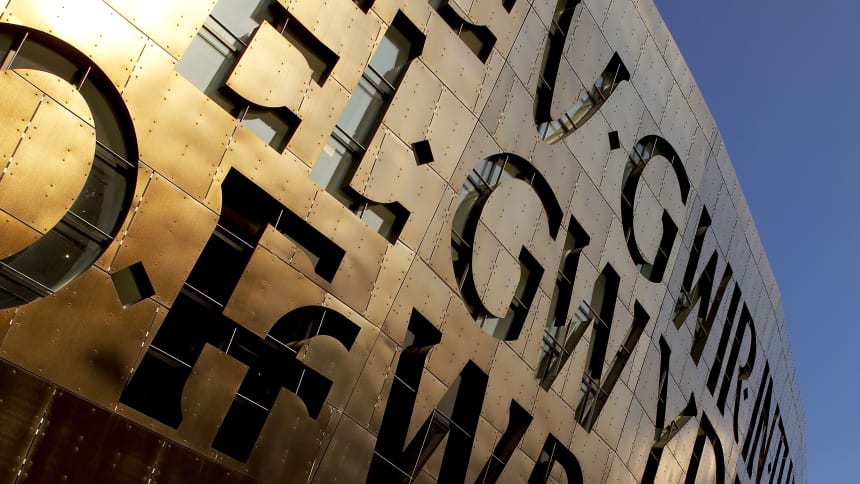
The Centre's famous inscription by poet, Gwyneth Lewis
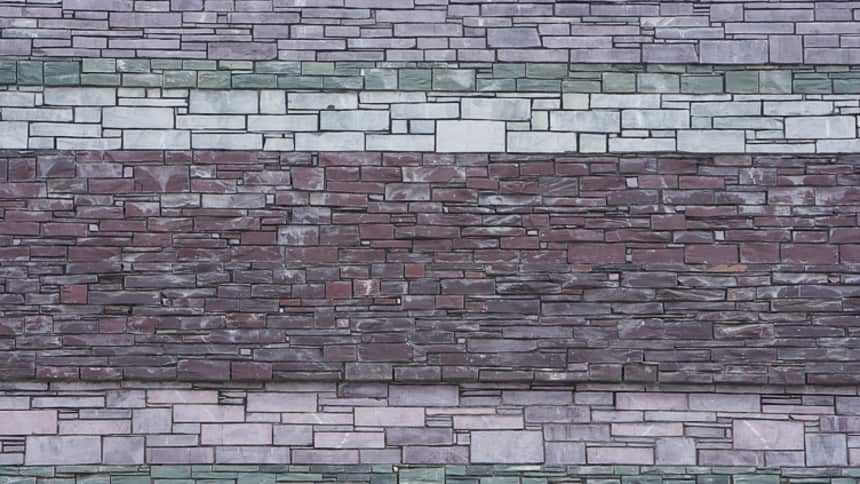
Slate cladding on the exterior represents local rock strata found along the local sea cliffs of South Wales
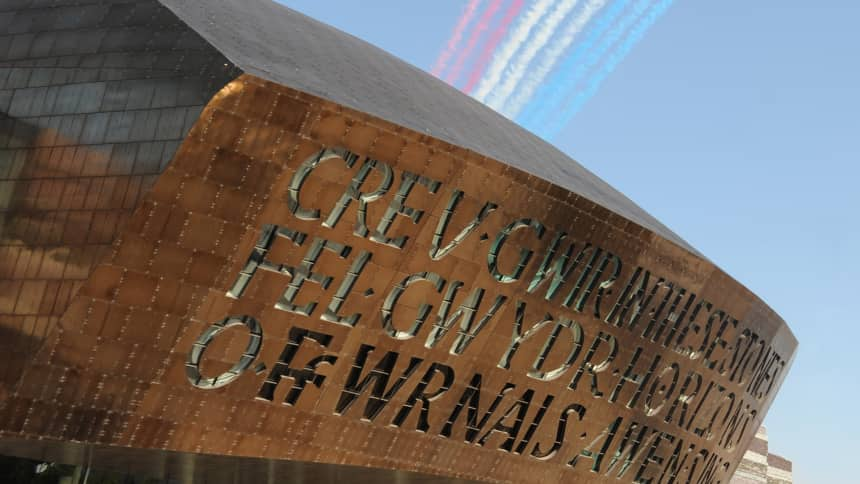
The copper-coloured roof known locally as the 'armadillo' is actually made from treated stainless steel
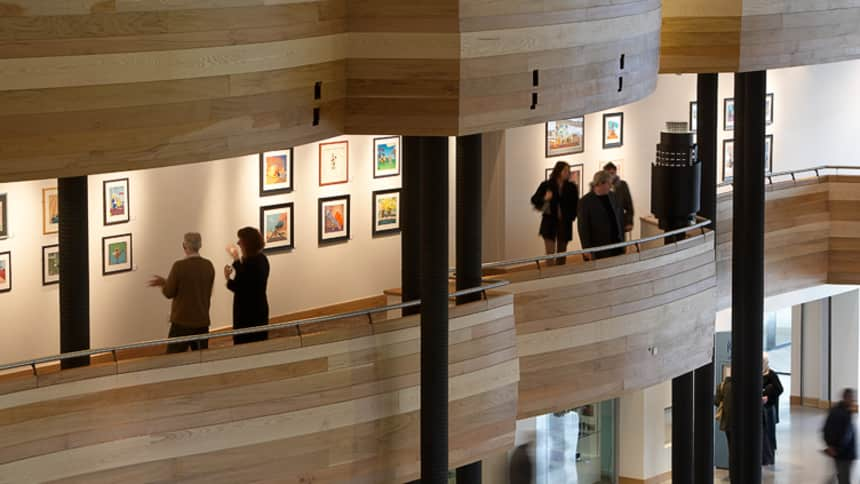
The interior of the building contains five different types of sustainable hardwoods, all sourced from Welsh woodlands
Unspecified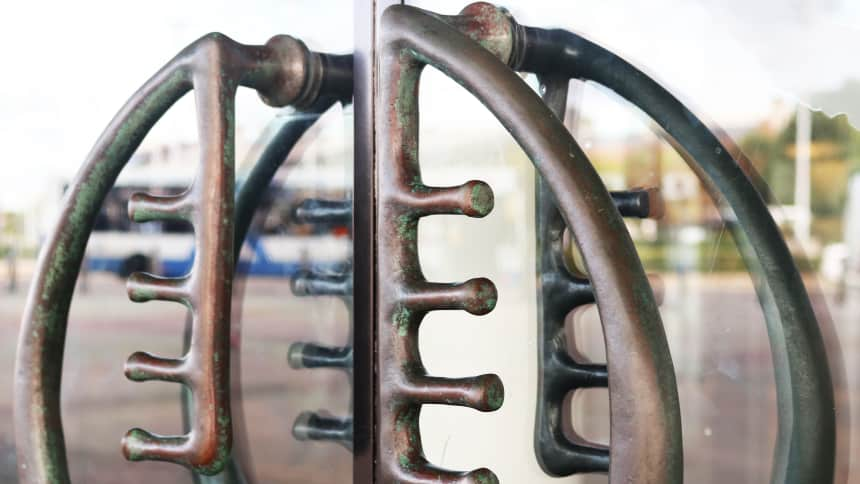
Our door handles are designed to look like open arms, bidding people a warm Welsh welcome/ croeso as they arrive

The stainless steel panels used on the roof also feature inside the building but are untreated and feature screws resembling the rivets found on a ship's hull
© Simon Ridgway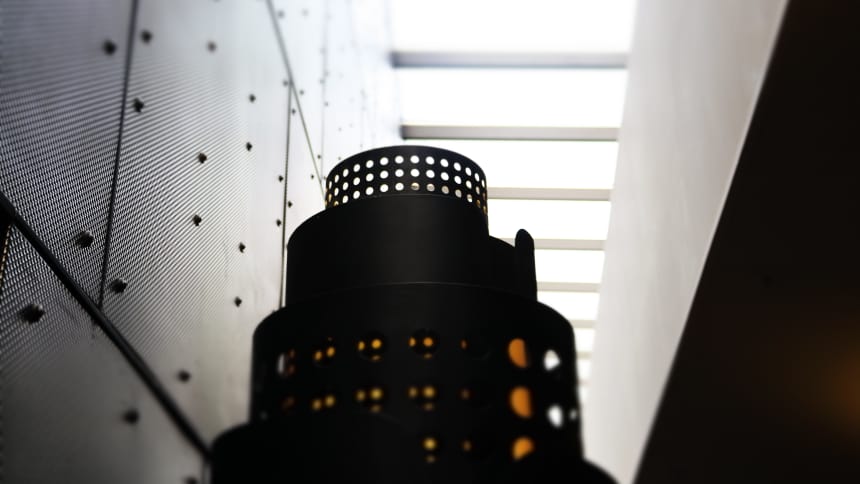
Our lights were designed to look like Welsh miner's lamps. The upright sections mirror the dark pillars found throughout the Centre which resemble fossilised tree ferns.
For the exterior of the building, 4,500 tonnes of structural steel was clad in 2,000 tonnes of recycled Welsh slate, reclaimed from waste spoils.
The striking bilingual inscription on the front of the building: In These Stones, Horizons Sing was composed by the former National Poet of Wales, Gwyneth Lewis.
The large Celtic lettering not only represents the ancient tradition of stone carving but also the artistic excellence, values and integrity found inside the building, reflected to the world by the glass used within each letter.
"No West End theatre boasts what we have here. There's nowhere in London that comes close to this facility."
Andrew Lloyd-Webber, composer
Stepping inside the building, the connection between the natural and industrial landscape continues with a sustainable, eco-friendly message throughout.
Hardwoods from sustainable Welsh woodlands were used throughout the interior while the tall, black pillars with fern-like fossil patterns represent the enchanting edges of a forest where magic meets reality.
Everywhere you look, you'll find examples of fine Welsh craftsmanship and artistic expression.
Take a look at our spaces inside the building
